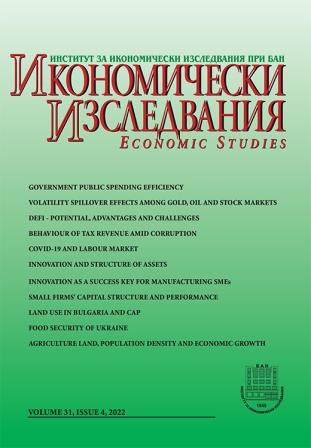Government Public Spending Efficiency: A Comparative Analysis between Kosovo and EU Countries, Especially Western Balkan Countries
Government Public Spending Efficiency: A Comparative Analysis between Kosovo and EU Countries, Especially Western Balkan Countries
Author(s): Lekë Pula, Florentina XheliliSubject(s): Economy, National Economy, Public Finances
Published by: Институт за икономически изследвания при Българска академия на науките
Keywords: Government Public Spending; Public Sector Performance and efficiency Index; Data Envelopment Analysis (DEA)
Summary/Abstract: Nowadays, it is evident that government public sector activities are one of the significant factors influencing economic and social indicators. The evaluation of public sector performance and efficiency is very important when we evaluate the relationship between public spending and the benefits that society derives from these public resources. The primary objective of this study is to evaluate the efficiency of Kosovo’s government public spending in comparison with EU countries and, in particular, Western Balkans countries over the period 2007-2016. The Public Sector Performance Index (PSP) and the Public Sector Efficiency Index (PSE) were used to assess the performance and efficiency of the public sector in Kosovo. Also, this study uses the non-parametric method DEA (Data Envelopment Analysis) to evaluate the input-output efficiency along with the Production Frontier Technique. The study results show that the PSP value ranges from 0.78, the minimum, to 1.39, the maximum. Kosovo ranks 30th out of 35 countries in the sample, with a performance index of 0.86, which is 15 percent below the average of 1.00. In terms of PSE, results vary from 0.76, the minimum to 1.35, the maximum. Kosovo ranks 23th out of 35 countries in this sample with an efficiency index of 0.96, 5 percent below the average, which is 1.00.Analyzing input-output efficiency results, it is found that the average of the countries included in the study achieves an efficiency of 46.70. This shows that countries are able to reduce total public spending by 54% and maintain the same level of total Public Performance. From the results of the output-oriented efficiency analysis, the countries in the sample achieve an efficiency of 73.64%, which means that the countries in the sample could have increased the level of outputs by 27% if they had used the same level of inputs.
Journal: Икономически изследвания
- Issue Year: 2022
- Issue No: 4
- Page Range: 3-17
- Page Count: 15
- Language: English

